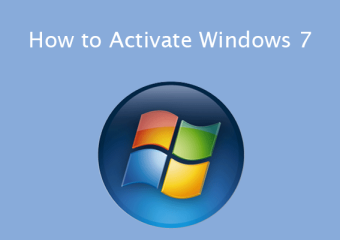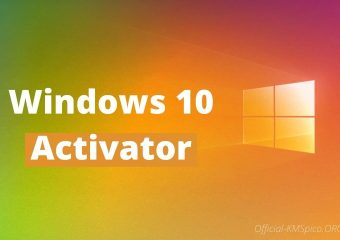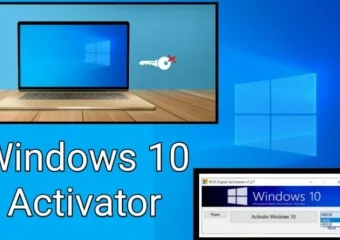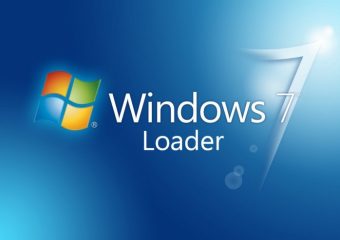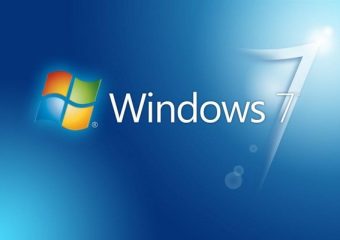Table of Contents
Windows 7 Activator txt
Windows 7 Activator txt, released by Microsoft on October 22, 2009, was a significant operating system that followed the widely criticized Windows Vista. It quickly gained popularity and became one of Microsoft’s most successful operating systems, appreciated for its improved performance, stability, and user interface.
One of the notable features of Windows 7 was the redesigned taskbar, which introduced the concept of “Jump Lists.” This feature allowed users to quickly access recently used files and perform common tasks with supported applications directly from the taskbar. The Aero Peek and Snap features enhanced multitasking and window management, providing a more efficient desktop experience.

Windows 7 Ultimate Activator txt
Windows 7 Activator txt brought improvements to system performance and resource utilization compared to its predecessor. The operating system introduced a refined kernel architecture, resulting in better speed and responsiveness. The minimum hardware requirements were also lower than those of Windows Vista, making it more accessible to a broader range of users.
Device management received enhancements with the introduction of the Devices and Printers feature, offering a centralized location for managing connected devices and printers. The Device Stage feature provided a consistent interface for interacting with and managing compatible devices, simplifying the user experience.
Windows 7 included advancements in networking, with HomeGroup making it easier for users to share files, printers, and media devices across a home network. The operating system also introduced improvements in wireless networking, helping users connect to and manage wireless networks more seamlessly. Windows 8.1
Windows 7 Ultimate Activation Text File
Security was a priority in Windows 7, with enhancements such as BitLocker To Go, extending the BitLocker drive encryption feature to external storage devices. The Action Center provided a central location for managing security and maintenance settings, ensuring that users could easily address potential issues.
Windows 7 received critical acclaim for its stability and user-friendly interface. Its success played a crucial role in redeeming Microsoft’s reputation following the mixed reception of Windows Vista. The operating system continued to receive support and updates from Microsoft until January 14, 2020, when official support ended. Despite the subsequent release of newer Windows versions, Windows 7 remains in use by some individuals and organizations due to its reliability and familiarity.
Windows 7: Key Features that Defined an Era
Microsoft’s Windows 7, released on October 22, 2009, marked a significant leap forward from its predecessor, Windows Vista. Packed with several key features, it quickly became a favorite among users and businesses alike, setting a new standard for Microsoft’s operating systems. Below are some of the standout features that contributed to Windows 7’s success:
1. Redesigned Taskbar with Jump Lists:
The Windows 7 taskbar underwent a notable transformation, featuring a sleeker design and the introduction of Jump Lists. Jump Lists allowed users to access recently opened files and perform common tasks associated with a particular application directly from the taskbar. This streamlined workflow and enhanced the efficiency of navigating through applications.
2. Aero Peek and Snap:
Windows 7 introduced Aero Peek, a feature that allowed users to preview the content of open windows by hovering over their respective taskbar icons. Aero Snap enabled users to easily organize and compare open windows by snapping them to the edges of the screen. These features greatly improved multitasking and simplified window management, contributing to a more intuitive user experience.
3. Improved Performance and Resource Management:
Addressing the criticisms of its predecessor, Windows 7 brought significant improvements in performance and resource utilization. The operating system featured a refined kernel architecture, resulting in faster boot times, smoother overall performance, and reduced system resource demands. This made Windows 7 more accessible to a wider range of hardware configurations.
4. Devices and Printers:
Windows 7 introduced the Devices and Printers feature, providing a centralized location for managing connected devices and printers. This streamlined device management, offering a visual representation of connected devices and their status. The Device Stage feature provided a consistent interface for interacting with compatible devices, simplifying the user experience for peripherals like cameras, phones, and printers.
5. Networking Enhancements:
Windows 7 aimed to improve the networking experience for users. The HomeGroup feature simplified file and printer sharing on home networks, making it easier for users to collaborate and share resources. The operating system also included advancements in wireless networking, enhancing the ease with which users could connect to and manage wireless networks.
6. Security Enhancements:
Recognizing the increasing importance of security, Windows 7 introduced several features to protect user data. BitLocker To Go extended the BitLocker drive encryption to external storage devices, securing data on portable drives. The Action Center provided a centralized hub for managing security and maintenance settings, ensuring that users could easily address potential issues and stay informed about the state of their system.
7. User Interface Improvements:
Windows 7 featured a refined user interface, with attention to detail in areas such as icons, windows, and system sounds. The operating system aimed to strike a balance between aesthetics and functionality, providing users with an aesthetically pleasing and intuitive interface. The overall design enhancements contributed to a more modern and visually appealing desktop environment.
8. Search and Libraries:
Windows 7 introduced an improved search functionality, making it faster and more intuitive to find files and programs. The Libraries feature allowed users to organize and access their files more efficiently by aggregating content from different locations into a single, easily navigable library. This streamlined file management and contributed to a more organized computing experience.
9. DirectX 11 and Multimedia Enhancements:
Catering to the gaming and multimedia community, Windows 7 included DirectX 11, bringing improvements in graphics and gaming performance. The operating system also introduced native support for various multimedia formats and devices, ensuring a seamless multimedia experience for users.
10. Extended Support and Legacy Compatibility:
Windows 7 offered an extended support lifecycle, receiving updates and security patches for an extended period. This stability and long-term support appealed to businesses and organizations, providing them with a reliable platform. Additionally, Windows 7 maintained compatibility with a wide range of legacy applications, ensuring a smooth transition for users upgrading from earlier Windows versions.
In conclusion, Windows 7 was a pivotal release for Microsoft, addressing the shortcomings of its predecessor while introducing a range of features that significantly improved the user experience. Its success not only redeemed Microsoft’s reputation after the mixed reception of Windows Vista but also established Windows 7 as a reliable and widely adopted operating system that continued to be used by many even after the release of subsequent Windows versions.
Windows 7: Embracing Excellence – A Look at the Pros
Windows 7, released by Microsoft in 2009, emerged as a flagship operating system that garnered widespread acclaim for its numerous strengths and user-centric features. Let’s delve into the pros that defined Windows 7 and contributed to its success:
1. Stability and Reliability:
Windows 7 brought much-needed stability and reliability to the Windows operating system ecosystem. It addressed the performance issues and perceived instability of its predecessor, Windows Vista, by introducing a refined kernel architecture. This resulted in a more robust and dependable platform, reducing system crashes and enhancing overall user experience.
2. Redesigned Taskbar and Jump Lists:
The revamped taskbar was a standout feature, offering a visually appealing and functional interface. The introduction of Jump Lists allowed users to access recent files and perform common tasks directly from the taskbar, streamlining workflow and reducing the time it took to initiate actions within applications.
3. Aero Peek and Snap for Enhanced Multitasking:
Windows 7 introduced Aero Peek, enabling users to preview open windows by hovering over taskbar icons. Aero Snap facilitated efficient window management by allowing users to snap windows to the edges of the screen. These features enhanced multitasking, making it easier for users to organize and compare open applications seamlessly.
4. Improved Performance and Resource Management:
Addressing the resource-intensive nature of its predecessor, Windows 7 optimized performance and resource management. The operating system exhibited faster boot times, smoother overall performance, and reduced system resource demands. This optimization contributed to a more responsive and efficient computing experience across a variety of hardware configurations.
5. Devices and Printers Centralization:
The Devices and Printers feature provided a centralized hub for managing connected devices and printers. This streamlined device management, offering users a visual representation of their devices and easy access to their status. Device Stage further simplified interactions with compatible devices, enhancing the overall user experience.
6. Networking Improvements:
Windows 7 aimed to simplify networking, particularly with the introduction of the HomeGroup feature. This feature facilitated easy file and printer sharing on home networks, enhancing collaboration and resource sharing among users. The operating system also improved wireless networking, making it more seamless for users to connect to and manage wireless networks.
7. Enhanced Security Features:
Security was a top priority for Windows 7. The BitLocker To Go feature extended drive encryption to external storage devices, bolstering data security. The Action Center provided a centralized location for managing security and maintenance settings, ensuring users could easily address potential issues and stay informed about their system’s health.
8. User Interface Refinements:
Windows 7 featured a refined and visually appealing user interface. From icons to windows, the operating system struck a balance between aesthetics and functionality. This attention to detail contributed to a modern and user-friendly desktop environment, enhancing the overall visual experience for users.
9. Search and Libraries for Efficient File Management:
The improved search functionality in Windows 7 streamlined the process of finding files and programs. Libraries aggregated content from different locations into a single, easily navigable library, simplifying file management and providing users with a more organized and efficient way to access their data.
10. DirectX 11 and Multimedia Support:
Windows 7 catered to multimedia enthusiasts with the inclusion of DirectX 11. This enhanced graphics and gaming performance, providing a more immersive experience for users. The operating system also offered native support for various multimedia formats and devices, ensuring a seamless multimedia experience.
In conclusion, Windows 7 was a triumph for Microsoft, addressing the shortcomings of previous versions and delivering a reliable, stable, and user-friendly operating system. Its numerous strengths, from enhanced multitasking features to streamlined device management and improved security, contributed to its widespread adoption and long-lasting popularity among users and businesses alike.
Exploring New Aspects of Windows 7: Unveiling Hidden Gems
While Windows 7 is often celebrated for its stability, performance, and user-friendly interface, there are some lesser-known aspects that added depth and versatility to the operating system. Let’s uncover these new facets that contributed to the overall Windows 7 experience:
1. Libraries for Streamlined Content Organization:
Windows 7 introduced Libraries, a feature that revolutionized file organization. Libraries aggregated content from different folders into a single view, providing users with a unified and easily navigable interface. This feature empowered users to organize and access their files efficiently, fostering a more organized and seamless computing experience.
2. Virtual Hard Disk (VHD) Support:
Windows 7 embraced virtualization with native support for Virtual Hard Disk (VHD) files. Users could create, mount, and interact with VHDs directly from the operating system. This feature facilitated the testing of new software configurations, operating systems, and applications in isolated environments, enhancing flexibility and reducing the risk of system-wide issues.
3. XP Mode for Legacy Application Compatibility:
Recognizing the prevalence of legacy applications, Windows 7 introduced XP Mode. This feature allowed users to run Windows XP in a virtual machine within Windows 7, ensuring compatibility for older applications. It provided a seamless transition for businesses and users who still relied on software designed for the earlier operating system.
4. Federated Search for Unified Information Retrieval:
Windows 7 brought a new dimension to search functionality with Federated Search. This feature extended search capabilities beyond local files to include remote repositories, such as networked file shares or websites. Users could create search connectors to access and retrieve information from various sources, enhancing the comprehensiveness of search results.
5. AppLocker for Advanced Application Control:
Addressing security concerns, Windows 7 introduced AppLocker, a feature that allowed administrators to define and enforce application usage policies. This granular control over application execution enhanced security by preventing unauthorized software from running on corporate networks. AppLocker provided administrators with a powerful tool to manage and secure their computing environments.
6. BranchCache for Improved Network Efficiency:
In environments with multiple branch offices, Windows 7 introduced BranchCache. This feature optimized network efficiency by caching content from file and web servers at branch locations. Users could access frequently used files locally, reducing the need for data to traverse the wide area network (WAN) and improving overall network performance.
7. Enhanced Touch Support:
While touch interfaces gained prominence with later versions of Windows, Windows 7 introduced some touch-friendly features. The operating system included basic touch capabilities, enabling users with touch-enabled devices to interact with their computers in a more intuitive manner. Although not as robust as later touch-centric interfaces, this laid the groundwork for touch support in subsequent Windows releases.
8. BitLocker To Go for Portable Drive Encryption:
Building on the success of BitLocker drive encryption, Windows 7 introduced BitLocker To Go. This feature extended the encryption capabilities to external storage devices such as USB drives and external hard disks. It provided users with a robust and convenient solution to secure their portable data, addressing the growing need for data protection.
9. Location-Aware Printing:
Windows 7 introduced Location-Aware Printing, a feature that automatically selected the default printer based on the user’s current location. This proved especially useful for laptop users who frequently moved between different networks and office locations. The system intelligently adjusted printer settings, enhancing convenience and streamlining the printing experience.
10. Problem Steps Recorder for Troubleshooting:
Windows 7 included the Problem Steps Recorder, a tool designed to assist users and support personnel in troubleshooting issues. When activated, this feature recorded a user’s interactions with the system, capturing screenshots and providing a step-by-step account of the problem. Users could then share this information with support teams to expedite issue resolution.
In conclusion, Windows 7’s hidden gems added depth and versatility to the operating system, addressing diverse user needs and enhancing overall functionality. From improved file organization to advanced security features and innovative virtualization support, these lesser-known aspects contributed to the comprehensive and forward-looking nature of Windows 7.
![Windows 11 Activator Full Indir – Turkce PC + DLC Windows 11 Activator Free Download 2022 for 32-64Bit [Latest]](https://i0.wp.com/softactivators.com/wp-content/uploads/2021/12/Windows-11.jpg?resize=150%2C150&ssl=1)




